

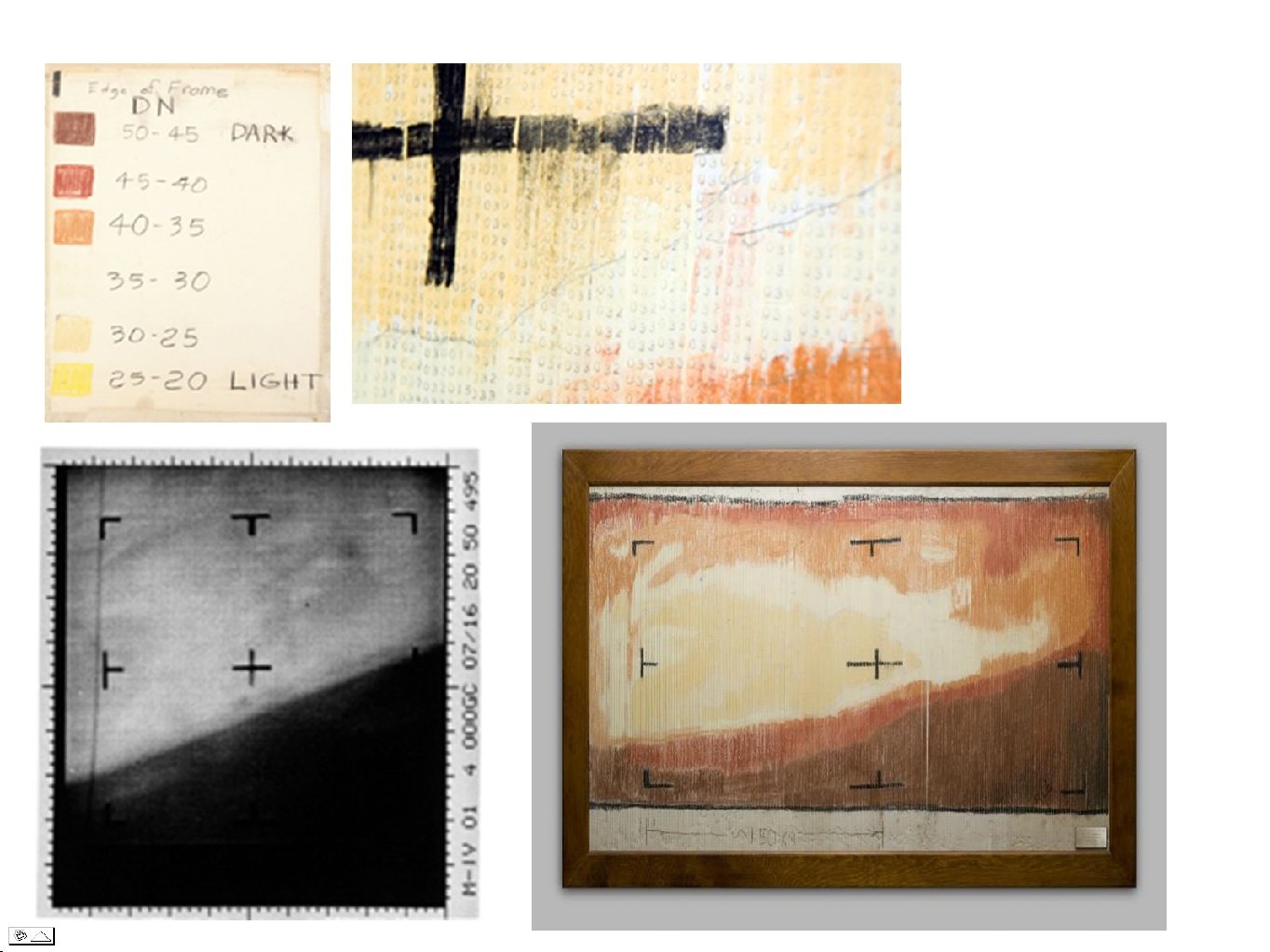
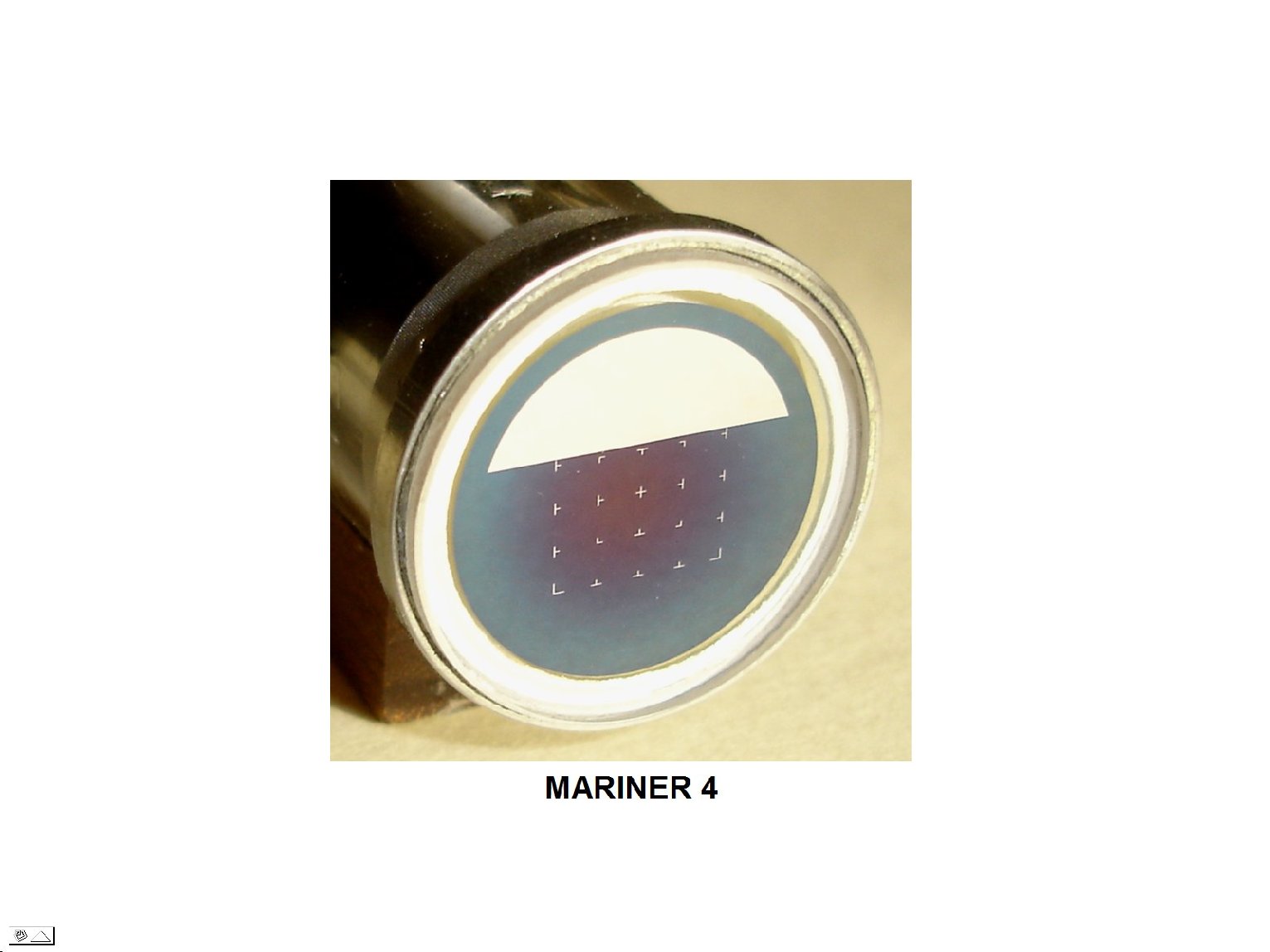
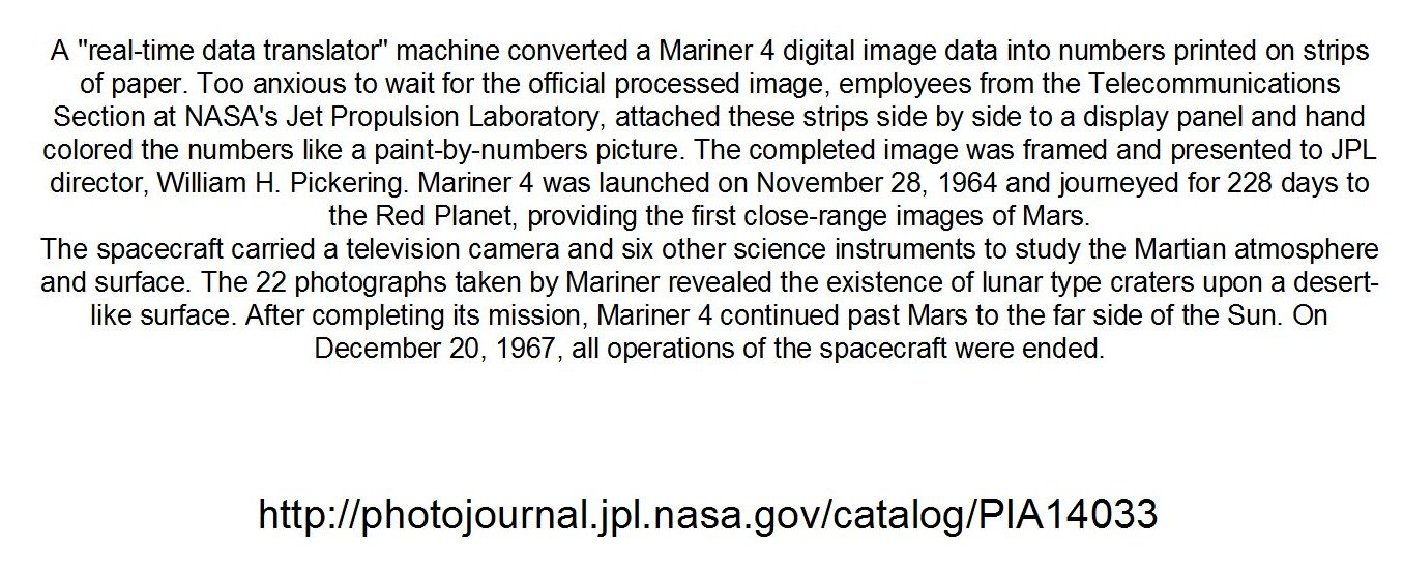
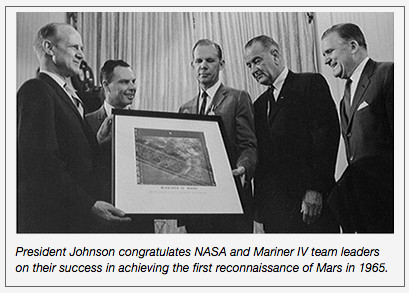
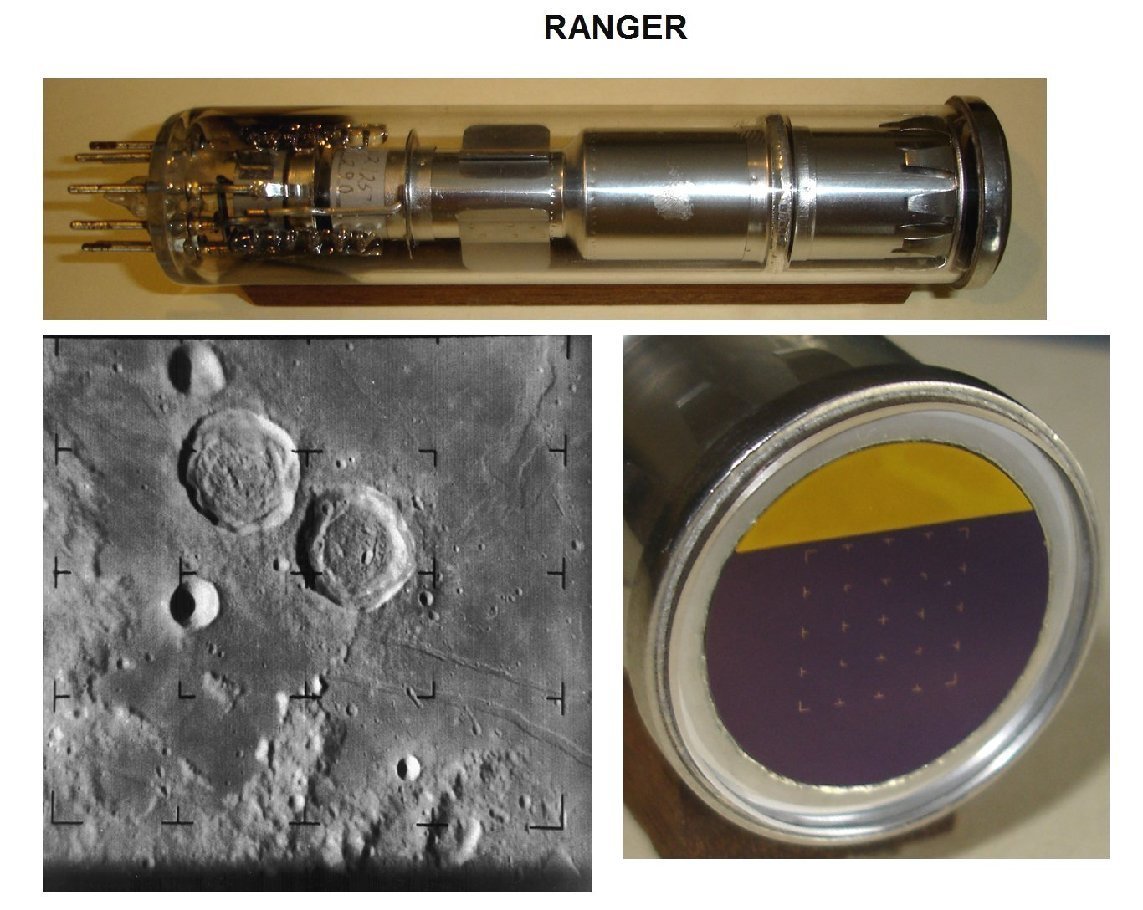

![]()
The Surveyor program was a NASA program that, from June, 1966
through
January, 1968, sent seven robotic spacecraft to the surface of the
Moon. Its primary goal was to demonstrate the feasibility of soft
landings on the Moon. The mission called for the craft to travel
directly to the Moon on an impact trajectory, on a journey that lasted
63 to 65 hours, and ended with a deceleration of just over three
minutes to a soft landing. The program was implemented by NASA's Jet
Propulsion Laboratory (JPL) to prepare for the Apollo program.
Vidicon tube photo by James Janesick. The vidicon tube shown
above is similar to the Surveyor vidicon tube and was donated
toDigiCamHistory.Com by Jim Janesick.
1969 MARINER 6 & 7
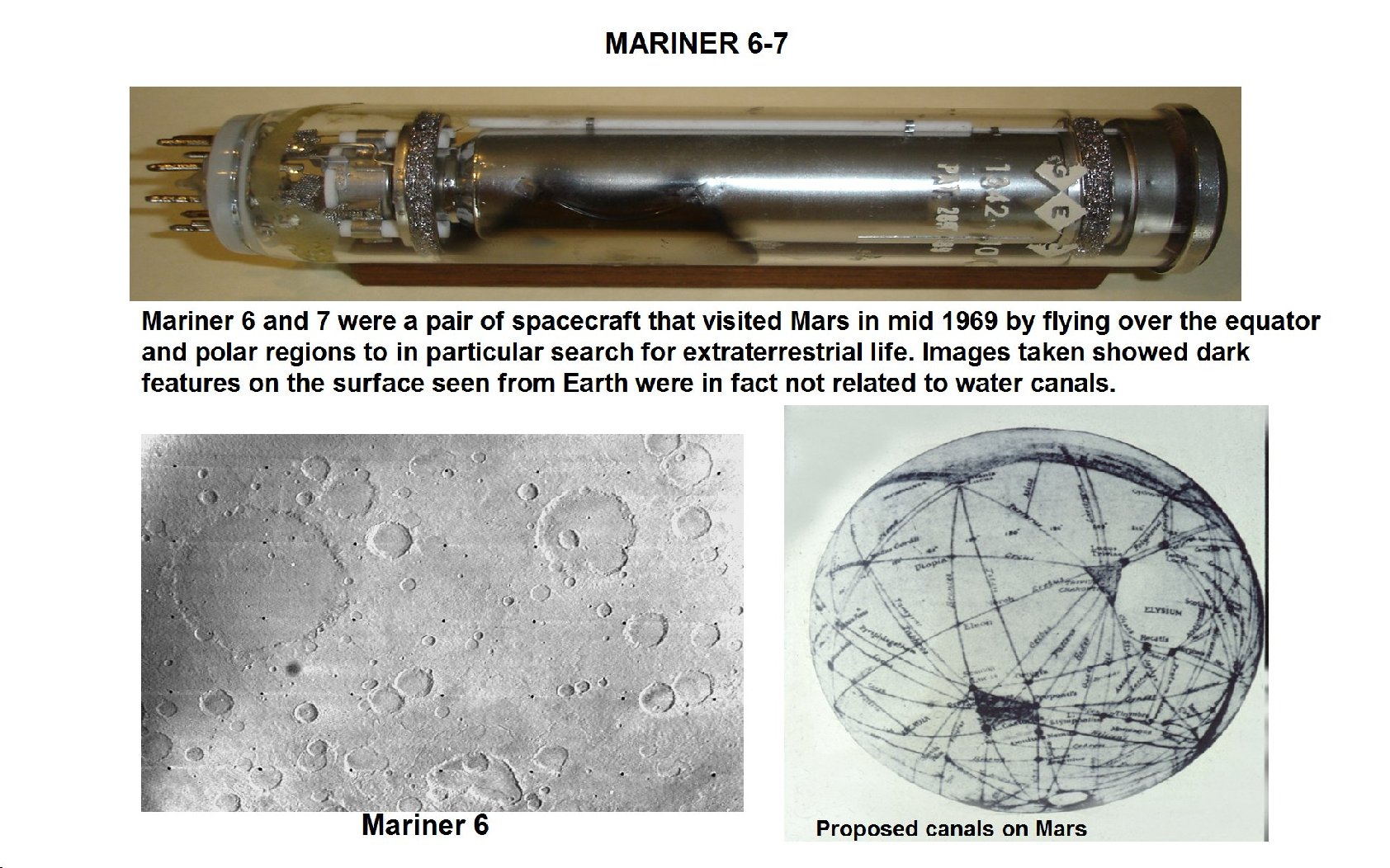
![]()
The vidicon tube shown above is similar to the Mariner 6 and 7 type
vidicon tube and was donated to DigicamHistory.Com by Jim Janesick
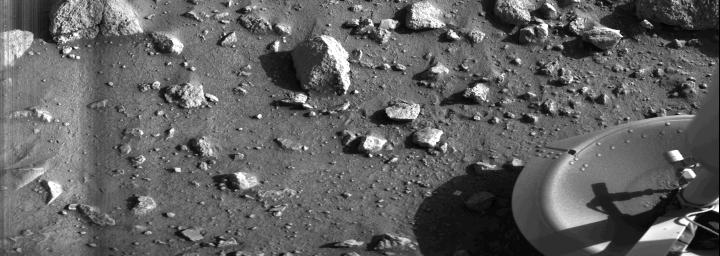

FIRST PHOTO FROM THE SURFACE OF MARS - This
is the first photograph ever taken on the surface of the planet Mars.
It was obtained by Viking 1 just minutes after the spacecraft landed
successfully on July 20, 1976. The Viking Lander camera design
was very different from vidicon framing or CCD array cameras. The
lander camera was a facsimile camera with a single, stationary
photosensor array (PSA), and azimuth and elevation scanning mechanisms.
A lander image was generated by scanning the scene in two directions
(elevation and azimuth) to focus light onto the photosensor array. The
Viking Lander cameras were built by Itek Corp. Light entered the
camera through the windows, reflected off the mirror toward the lens,
passed through the lens, and was sensed by one of the photodiodes. The
light generated a voltage in the selected photodiode that was digitized
by an analog-to-digital (A/D) converter. The photosensor array
consisted of 12 silicon photodiodes (or diodes) sensitive to light
between 0.4 and 1.1 micrometers. The diodes were arranged in a 2x6
array.
http://pdsimage.wr.usgs.gov/cdroms/Viking_Lander/vl_0001/document/volinfo.htm
http://www.jpl.nasa.gov/news/news.php?feature=2707
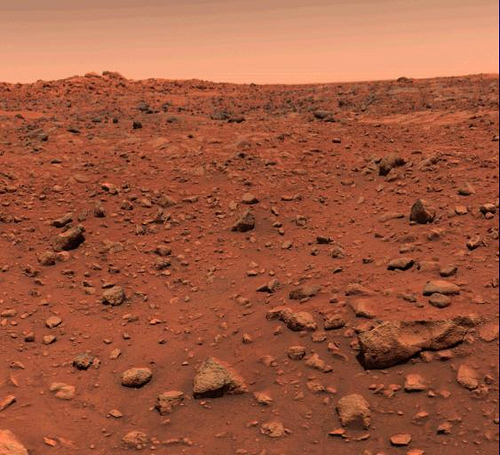

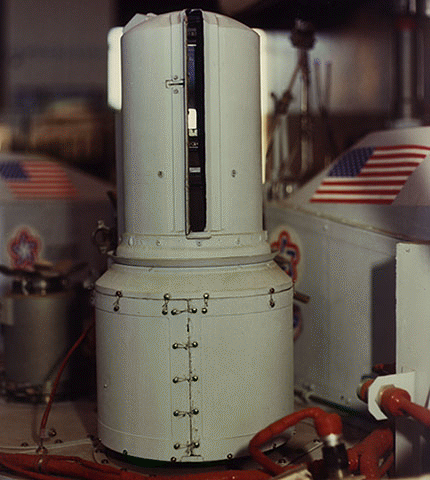
FIRST COLOR PHOTO FROM THE SURFACE OF MARS - Taken by the Viking I Lander , July 21, 1976. Lander camera shown on the right.
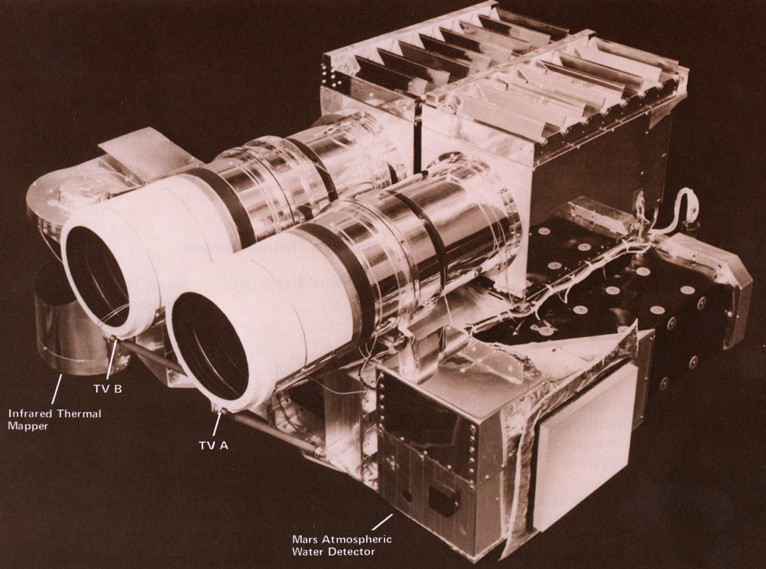
![]()
![]()
The primary Viking instrument on the Viking orbiter consisted of two vidicon cameras for imaging (shown above). The Viking vidicon tube design presented above is a storage type tube imager where incoming photons generate charge within the front face photoconductor. Quickly thereafter the photoconductor is then scanned by a beam of low-velocity electrons. The fluctuating x-y scanning beam current is amplified and displayed on a TV monitor to reproduces the scene that was imaged. The image stored on the photoconductor is automatically erased by the beam of electrons (Vidicon photo taken by James Janesick). Vidicon tube similar to the Viking Orbiter vidicon tube was donated to DigiCamHistory.Com by Jim Janesick.
The orbiter generated tens of thousands of images. The photo on the left is the famous face image that caused so much public discussion early on. The middle photo is of Mars' moon Phobos and the one on the right is of Mars' Dromore crater showing clear evidence that water once existed on Mars. The two orbiter spacecraft were deliberately placed in orbits around Mars where they would remain in space for at least fifty years to kill off any stray microbes to avoid contaminating the planet as the search for life on Mars continues to this day. As far as we know the orbiters still continue to circle the planet.1977 VOYAGER 1 & 2 (Mariner 11 & 12)
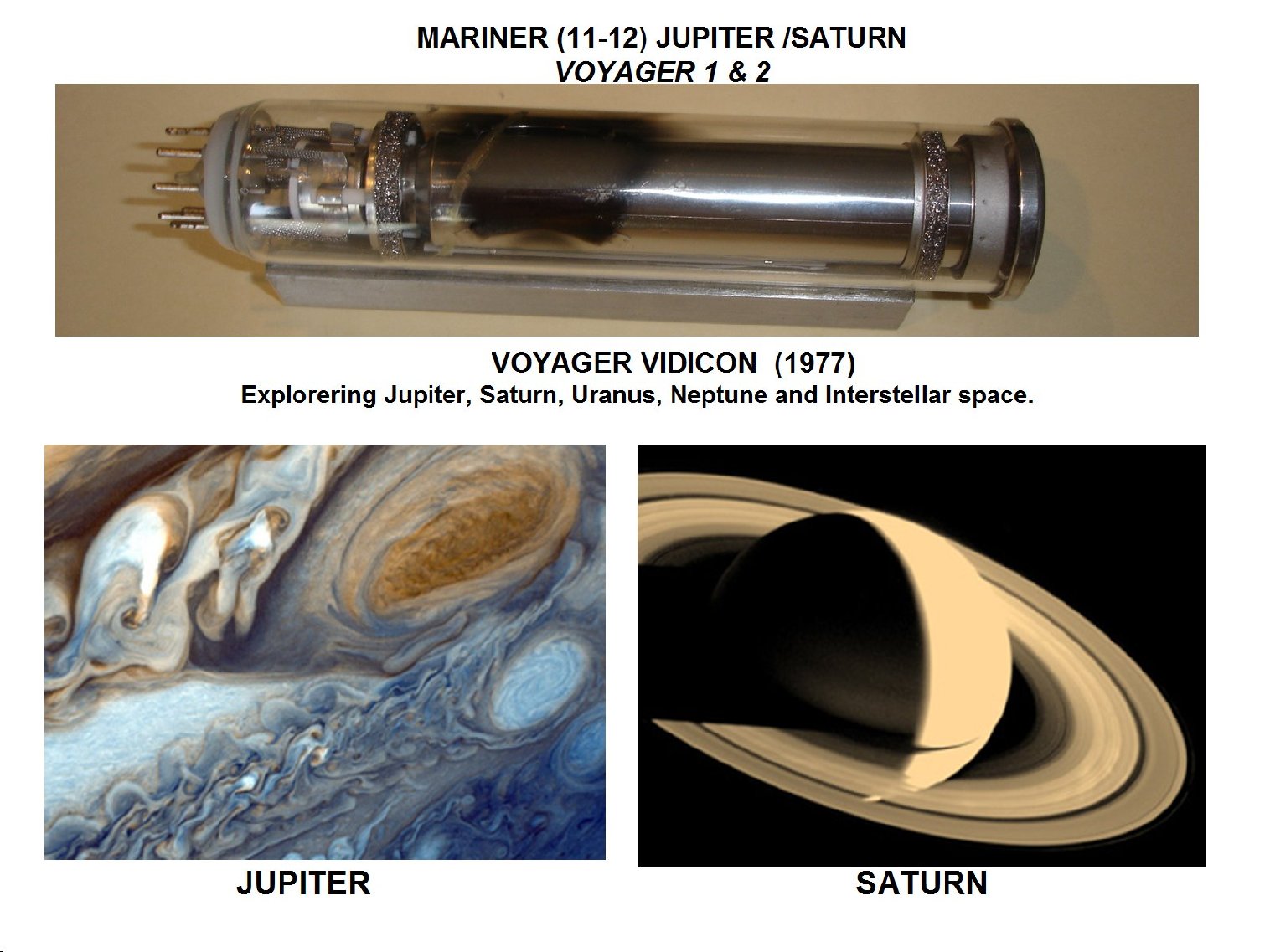
![]()
The above vidicon tube is similar to the one used for Mariner 11 &
12, now called Voyager 1 & 2, and was donated to DigiCamHistory.Com
by Jim Janesick.
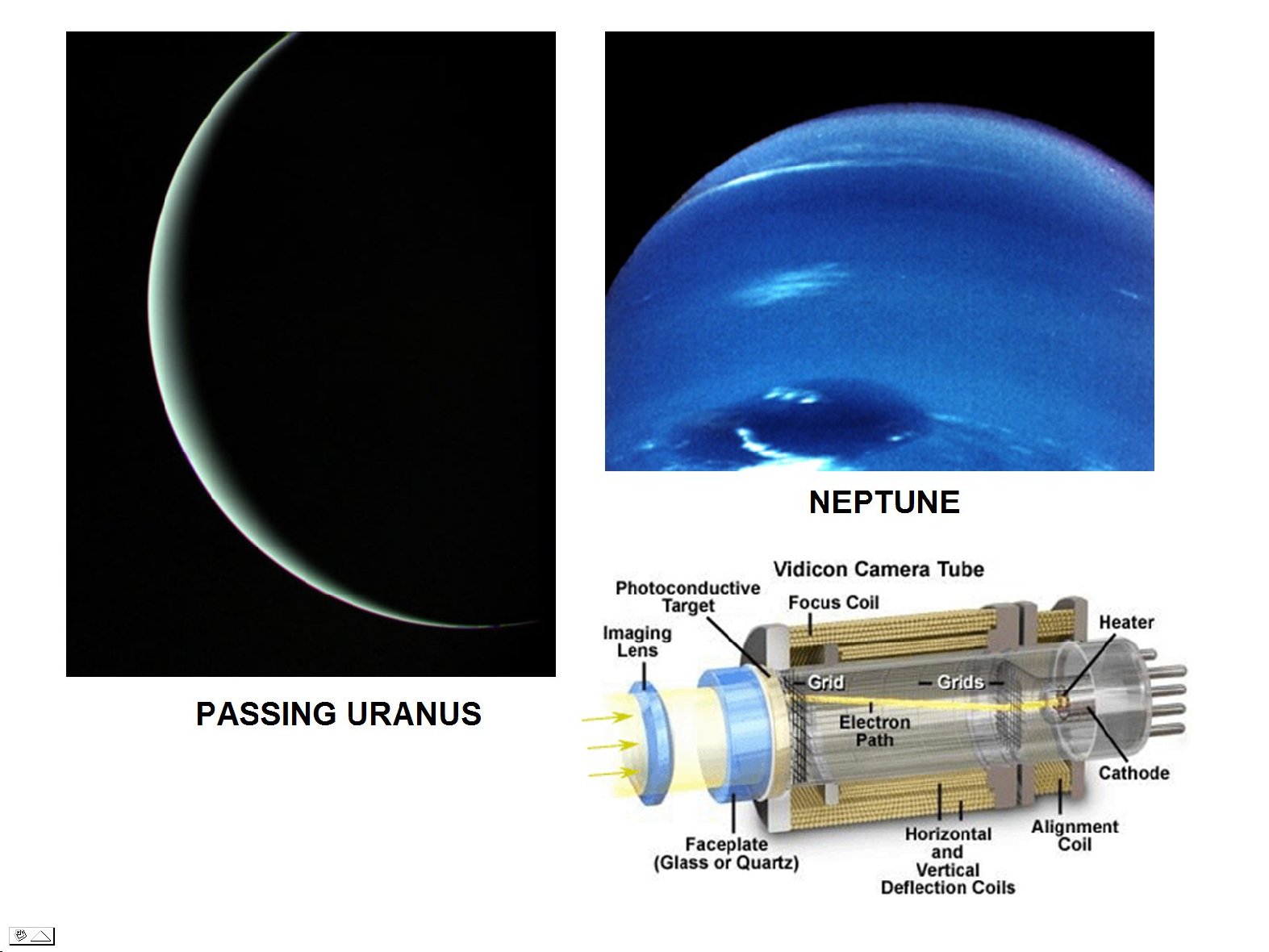
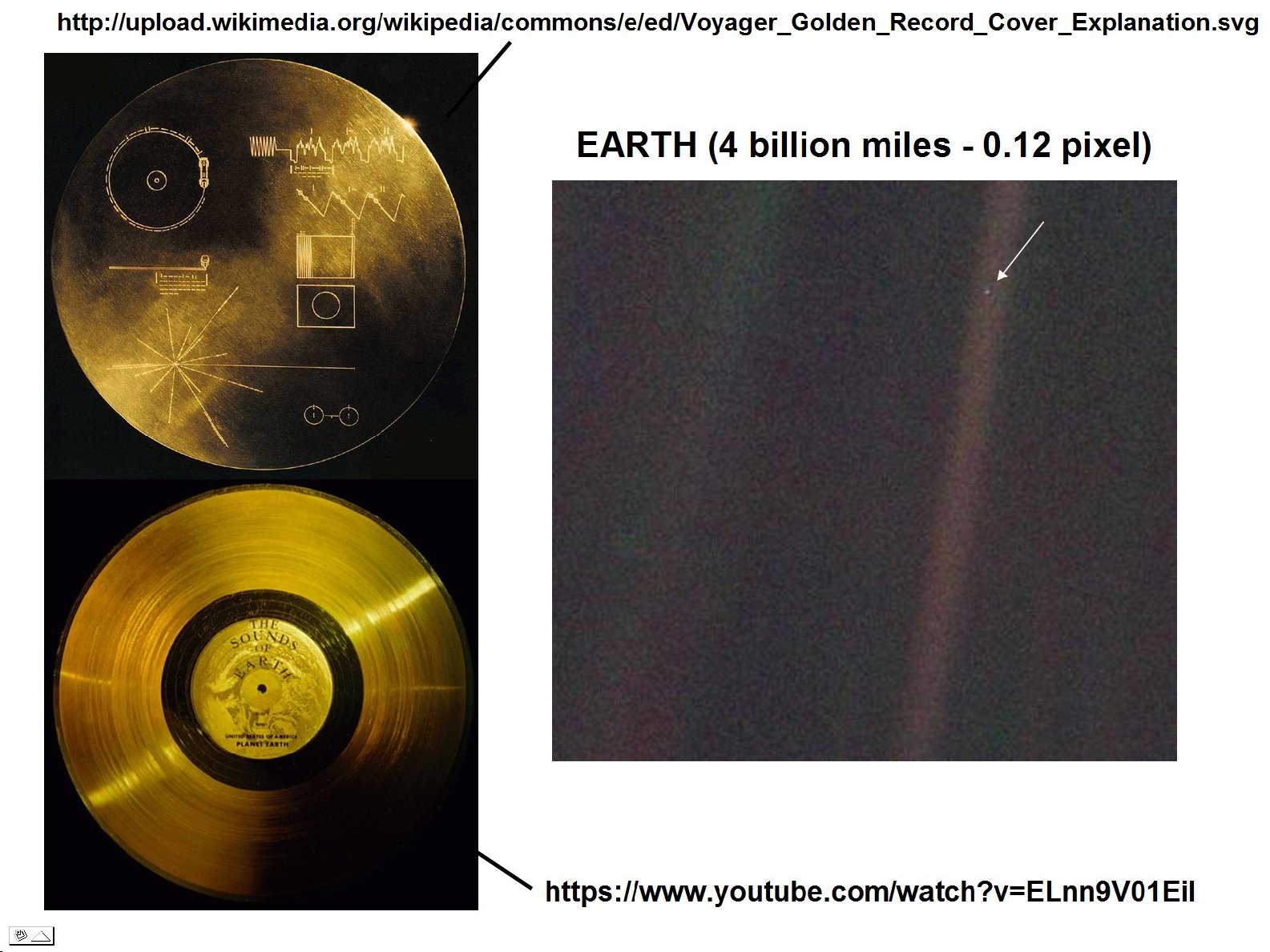
Explanation of diagrams on recording - http://upload.wikimedia.org/wikipedia/commons/e/ed/Voyager_Golden_Record_Cover_Explanation.svg
Voices and music recorded - https://www.youtube.com/watch?v=ELnn9V01EiI
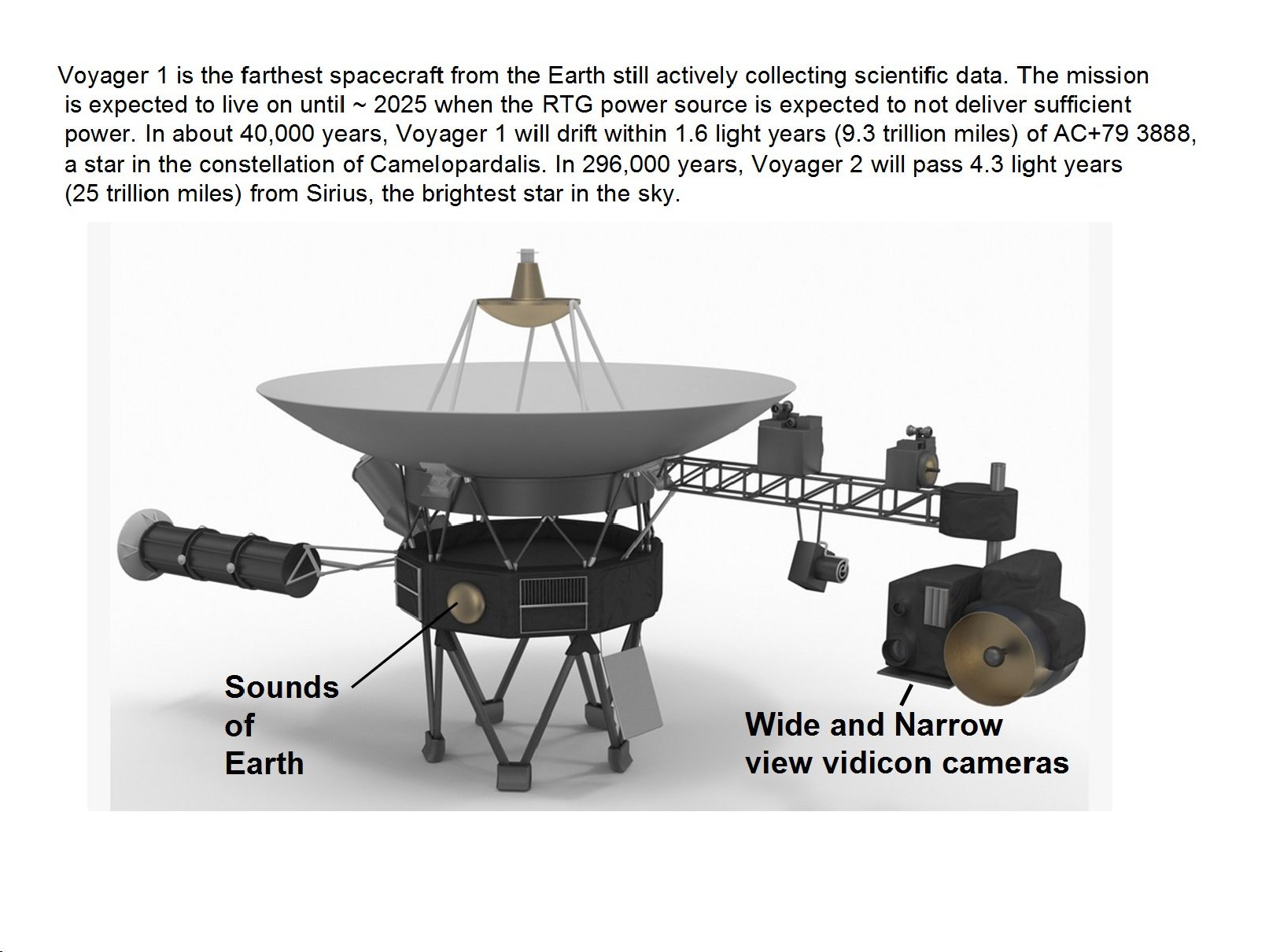
TO RETURN TO 1970s MAIN PAGE CLICK HERE
TO RETURN TO JANESICK CONTINUATION PAGE CLICK HERE
U.S. SPACECRAFT 1980s and 90s CLICK HERE
U.S. SPACECRAFT 2000 and BEYOND CLICK HERE
EVOLUTIONARY / EXPERIMENTAL IMAGERS CLICK HERE
FOR INFORMATION ON NON-ASTRONOMY CCDS - COMMERCIAL, INDUSTRIAL, SCIENTIFIC, MEDICAL, ETC. CLICK HERE